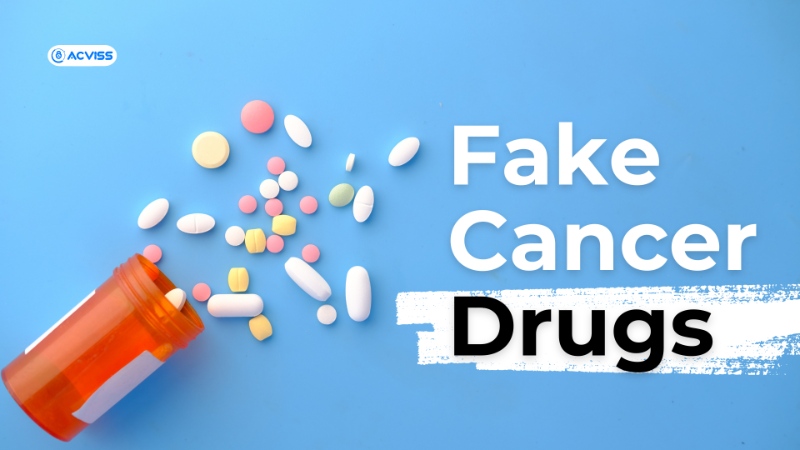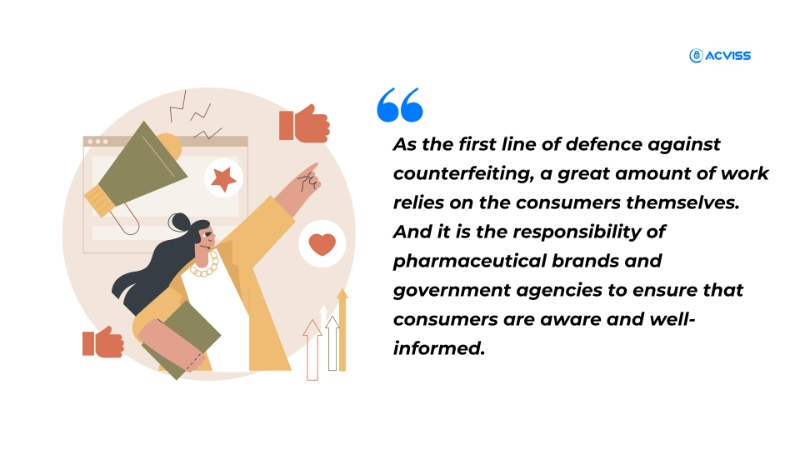Uncovering the Dangers of Counterfeit Cancer Drugs in the Pharmaceutical Industry

Counterfeiting in the pharmaceutical industry has been in existence for a long time in history. Fake drugs pose a significant threat to public health as they may contain harmful ingredients or have inadequate dosage levels, which can cause severe harm or even death to patients. The Tylenol poisoning of 1982 is an instance which shed light on the importance of having stringent regulations and standards for the production and distribution of pharmaceutical products.
However, despite the strict laws and guidelines, counterfeiters continue to exploit customers. Even the cancer medications weren't left alone. In late 2022, counterfeit cancer drugs worth Rs 8 crore were seized in Delhi and the most shocking part is that the racket has been in action for the past four years. Counterfeit cancer drugs can be fatal because they can result in cancer progression or recurrence, decreased treatment effectiveness and unfavourable side effects.
Learn the emerging technologies that can solve the counterfeit threat
What are Counterfeit Drugs?
Fake medications are manufactured with inferior ingredients and distributed illegally without the approval of regulatory agencies or relevant authorities, just like any other counterfeit product. Each country will have a dedicated agency to monitor the production and supply of drugs, such as the Central Drugs Standards Control Organisation (CDSCO) or the Food and Drug Administration (FDA).
The fake medications may be fashioned to resemble real drugs or may include hazardous compounds, improper dosages or inactive ingredients. These medications are difficult to track down, harmful to use and not effective because they are frequently offered online or through illegal channels and are not subject to quality control inspections.
The Dangers of Counterfeit Cancer Drugs
Drugs are one of the vital factors in the treatment of cancers. And the counterfeits pose grievous risks to cancer patients.
They lack the active components required to treat cancer, which is an alarming risk. This implies that cancer patients using these medications are not receiving the necessary care to treat their illness. Their cancer may so continue to advance and spread, resulting in more serious health issues and perhaps their demise.
Fake cancer treatments may interact adversely with other prescriptions that cancer patients are taking, which is another risk they pose. To treat their condition and manage their symptoms, many cancer patients take a range of drugs. If counterfeit cancer treatments are added to the mix, they may negatively impact the other drugs resulting in serious consequences.
Studies have indicated that a lack of effective regulatory supervision, poor supply chain management and a lack of knowledge about the risks of counterfeit drugs contribute to the high incidence of fake medications in underdeveloped nations. Up to 20% of the pharmaceutical business in India is made up of fake drugs, making it a serious problem that needs immediate attention.
Covid and The Supply Chain
The major reason for the rise in counterfeit cancer drugs can be contributed to the Covid-19 pandemic and lockdown. The global supply chain was in disarray and the unavailability of proper medications has allowed counterfeiters to further their businesses beyond geographical borders.
With the popularity of e-commerce platforms and online shopping, online pharmacies became prevalent. Although with the regulations and policies in place, online pharmacies became the new playground for counterfeiters to spread their market, a good number of which went unsupervised. This has turned out to be fatal for every consumer, who was now unable to distinguish between a real drug and an imitation.
Preventing Counterfeit Drugs in India
The role of the government in regulating drug production and distribution in the country is critical. And the Indian government and law enforcement agencies have taken several steps to prevent counterfeit drugs in the pharmaceutical industry.
Laws
To ensure that medications are produced, imported and dispensed securely and efficiently, the Indian government has put in place several laws and regulations. Standards for medication manufacturing and imports in India were established by the Drugs and Cosmetics Act of 1940 and the Drugs and Cosmetics Rules of 1945. The Indian Pharmacopoeia Commission also establishes requirements for the efficacy, safety and quality of medicines.
Regulatory Bodies
The Indian government has also formed several regulatory organisations to control the production, importation and distribution of medicines. These organisations include the National Pharmaceutical Pricing Authority (NPPA), the Drug Controller General of India (DCGI) and the Central Drugs Standard Control Organisation (CDSCO).
Anti-counterfeit solutions
To strengthen the management of the drug supply chain, the Indian government has put in place several measures. Technological solutions like track-and-trace systems, barcoding and serialisation are being mandated to be implemented to make sure that medications are correctly monitored and identified along the supply chain.
Anti-counterfeiting solutions like Acviss’s security labels help consumers to verify the product and gain knowledge about the manufacturers, date of origin, ingredients, batch number and other details. It also allows brands to track their product which helps to identify the exact point at which it is being tampered with.
Law enforcement organisations in India are also putting aggressive measures to prevent the sale of fake pharmaceuticals. The Central Bureau of Investigation (CBI) has established a specialised team to investigate cases of counterfeit drugs and the Narcotics Control Bureau (NCB) has also been engaged in the fight against the distribution of fake medicines.
Grey markets can be dangerous learn how to avoid them: Click here

How Can You Avoid Counterfeit Drugs
It's critical to exercise caution while acquiring medications if you or someone you know has cancer. The following actions can be taken to safeguard oneself from bogus cancer medications:
1. Only buy medicines from reliable vendors. If you are buying online, make sure the website is reputable and the medication is being sold by an authorised pharmacy. Or if you are choosing an offline pharmacy and check whether they have proper licenses and registrations.
2. Verify the medication's labelling and packing. Look for typos, missing details or other indications that the medication might be fake. Search for the medicine you want to buy online, check the images and the brand names and cross-verify it with the product in hand. Buy it only if it is a 100% match.
3. Discuss any drug you are thinking about taking with your doctor. You can get assistance from your doctor in figuring out whether the medication is legal and suitable for you to take. Use only the ones that your doctor prescribes for you, never choose the alternative or suggestions from other people who are not experts in the field.
4. Report any suspicious medication to the authorities. If you suspect you have purchased fake cancer drugs, report the medication to the CDSCO or other government agencies so that they can investigate and take action if necessary.
It's everyone’s responsibility
The public's health is seriously threatened by counterfeit medications, especially when it comes to cancer treatment. Producing and distributing fake cancer medications has the potential to seriously damage or even kill individuals. To stop the pharmaceutical business from using fake medications, the Indian government and law enforcement authorities have implemented rules and regulations, established regulatory organisations, enhanced supply chain management and conducted investigations.
However, more must be done to stop the manufacture and sale of fake medications, especially in developing nations where regulatory oversight may be insufficient. As the first line of defence against counterfeiting, a great amount of work relies on the consumers themselves. And it is the responsibility of pharmaceutical brands and government agencies to ensure that consumers are aware and well-informed about how to identify and be proactive when confronted with a fake drug.